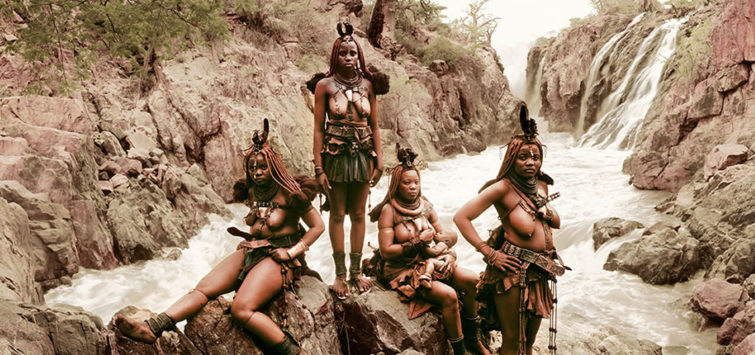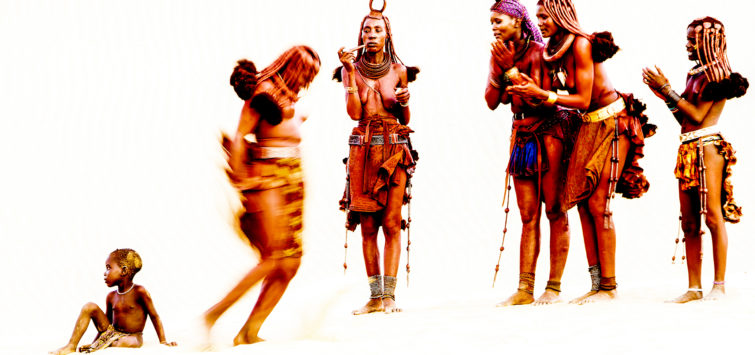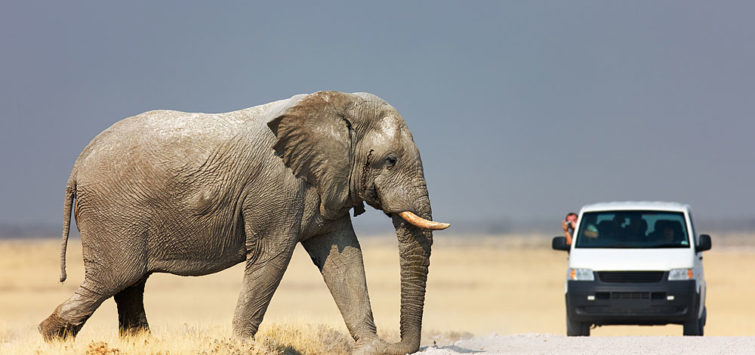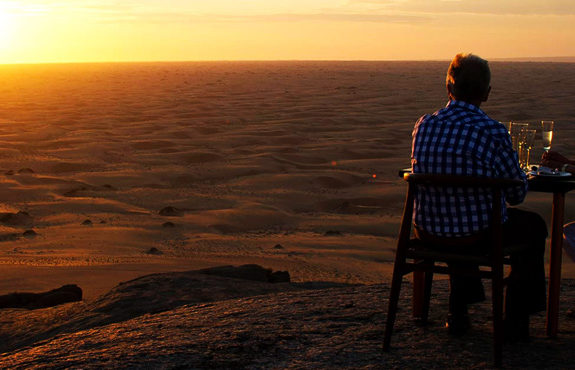Description
Exotic and ethnic meeting with world-famous Himba people of the Kaokoland, in the northern Namibia. Himba are one of the few tribes on Earth, who until today continue to keep their ancient culture, customs and traditional way of life. Meeting Himba face to face and visit at the village takes you on an adventure “far away from civilization.
| Day | Activities | Hotels and Meals |
| Day 1 |
Road Transfer Windhoek -Etosha Park | |
| Day 2 |
Tours and Safaris at Etosha Park | |
| Day 3 |
Road Transfer Etosha to Kaokaland | |
| Day 4 |
Meet the Himba People Tour | |
| Day 5 |
Road Transfer to Windhoek |
Day 1: Wildlife Sanctuary – Etosha National Park
Close encounter with wildlife of Africa! Early departure 500 km north to Wildlife and nature Sanctuary of Namibia, Etosha National Park, known as the “Hidden Treasure of Africa”. After arrival, exploring nearby waterholes.
Day 2: Drive to Etosha
Second day, in the morning tour of the western safari trails. Lunch at the Okakuejo camp and in the afternoon exploring eastern trails of Etosha. Around 7pm return to the camp, before closing of the gates, dinner and relaxation. In the evening and late till night, observing wildlife at the waterhole, a live “theater of nature”.
Be it a lion or an elephant, a giraffe or a zebra; almost all African animal species are represented in this huge nature reserve. There is an estimated number of 250 lions in the park, 300 rhinos, 2 500 giraffes, 6 000 zebras and more than 2 000 elephants. Variety of antelope species: Oryx, Kudu, Eland, Wildebeast and Impala live in Etosha. The dainty springbok are especially numerous; at least 20 000 of them roam the reserve. Often, they can be observed in enormous herds of several hundred animals.
In Etosha, 114 mammal species are found, several are rare and endangered e.g. black rhino (largest number in the world), cheetah and black-faced impala. Etosha’s elephants are the largest in Africa. The tallest found measuring up to 4m. Blue wildebeest, zebra, hyena, lions, leopard and giraffe and about 340 bird species, are also found in the area.
The area has about 30 springs and waterholes that provide excellent game viewing and fantastic photographic opportunities. Visitors should approach and depart from waterholes slowly, with as little noise as possible, as not to disturb the game. There are three most popular rest camps at the Etosha: Okaukuejo, Halali and Namutoni, accommodating the visitors in the luxurious, thatch-roof bungalows, designed in the African style. Each camp has a leisure area with restaurants, shops and swimming pool.
Distance: around 450 km to Etosha on tarred roads, following day around 200km on well-maintained, gravel roads of Etosha.
Day 3 – Into Kaokoland
After breakfast, “bye bye” to Etosha and venturing further north to Kaokoland, to Opuwo, capital of this northern region. The next day, meeting with semi-nomadic Himba people. Himba are one of the last tribes on Earth, who continue to keep their traditional and ancient way of life, as they did for hundreds of years.
Distance: around 400km mainly on tarred roads.
Accommodation: camping or lodges.
Day 4 – Meeting Himba People
In the morning, ethnic experience and unforgettable visit to the Himba village, learning about their fascinating way of life. Unique opportunity for observing an exotic culture and customs. The Himba are a tribe of nomadic pastoralists who inhabit the Kaokoland area of Namibia. The Himba have clung to their traditions and the beautiful Himba women are noted for their intricate hairstyles and traditional jewelry.
As Himba men and women wear few clothes apart from a loin cloth or goat skinned mini-skirt, they rub their bodies with red ochre and fat to protect themselves from the sun giving their appearance a rich red colour. Himba jewelry is made from iron or shell, and due to their intricate designs have become very popular amongst western tourists.
Visit at the Himba village creates superb vista for spectacular ethnic photography! One of the world’s best and award-winning ethnic photos were taken at the Himba villages in Namibia.
Distance: around 150km on gravel & tarred roads.
Day 5 – Return to Windhoek
After breakfast we are heading “back to civilization”, to Windhoek, the capital city of Namibia. Our journey will take around 9 hours, via tar road, with the stops to stretch the legs, eat lunch and take pictures of the magnificent African landscapes. Arrival in Windhoek in late afternoon, we will transfer you to the hotel/lodge of your choice (in Windhoek).
Distance: around 700km on tarred road.
Meals: breakfast in Opuwo, lunch on the way.
Important to Know
- This tour can’t be booked by solo travelers.
- Rates are per person and exclude the international flight from/to your home country.
- Rates include a fixed budget for flights during this tour. Flights may cost more, depending on travel dates. If so, your quote will reflect this.
5 Days From USD 3,200 Per Person
STARTING AND ENDING:
Windhoek Airport – Windhoek Airport
DEPARTURE TIME:
Flexible
RETURN TIME:
Flexible
WEAR:
Comfortable clothing, hiking boots, hat, jacket and sunscreen.
INCLUDED:
- Government imposed increase of park fees and/or taxes
- Park fees (for non-residents)
- All activities (unless labeled as optional)
- Meals (as specified in the day-by-day section)
- Drinks (as specified in the day-by-day section)
- All accommodation (unless listed as upgrade)
- Accommodation on the day before the tour departs
- Roundtrip airport transfer
- A professional driver/guide
- All transportation (unless labeled as optional)
- All flights during the tour
- All Taxes/VAT
NOT INCLUDED
- Accommodation on the last day
- International flights (from/to home)
- Tips (tipping guideline US$10.00 pp per day)
- Personal items (souvenirs, travel insurance, visa fees, etc.)
- Some meals (as specified in the day-by-day)
Additional information
Comfort Level:
Budget, Luxury, Mid Range
Interest:
Beach holidays, Honeymoon, Photography, Study Tours









Reviews
There are no reviews yet.